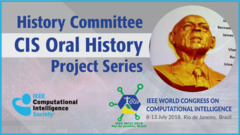
Already purchased this program?
Login to View
This video program is a part of the Premium package:
Siamese Verification Framework for Autism Identification During Infancy Using Cortical Path Signature Features
- IEEE MemberUS $11.00
- Society MemberUS $0.00
- IEEE Student MemberUS $11.00
- Non-IEEE MemberUS $15.00
Siamese Verification Framework for Autism Identification During Infancy Using Cortical Path Signature Features
Autism spectrum disorder (ASD) is a complex neurodevelopmental disability, which is lack of biologic diagnostic markers. Therefore, exploring the ASD Identification directly from brain imaging data has been an important topic. In this work, we propose the Siamese verification model to identify ASD using 6 and 12 months cortical features. Rather than directly classifying a testing subject is ASD or not, we determine whether it has the same or different label with the reference subject who has been successfully diagnosed. Then, based on the comparison to all the reference subjects, we can predict the label of the testing subject. The advantage of modeling the classification problem as a verification framework is that it can greatly enlarge the training data size and enable us to train a more accurate and reliable model in an end-to-end manner. In addition, to further improve the classification performance, we introduce the path signature (PS) features, which can capture the dynamic longitudinal information of the brain development for the ASD Identification. Experiments showed that our proposed method reaches the best result, i.e., 87% accuracy, 83% sensitivity and 90% specificity comparing to the state-of-the-art methods.
Autism spectrum disorder (ASD) is a complex neurodevelopmental disability, which is lack of biologic diagnostic markers. Therefore, exploring the ASD Identification directly from brain imaging data has been an important topic. In this work, we propose the Siamese verification model to identify ASD using 6 and 12 months cortical features. Rather than directly classifying a testing subject is ASD or not, we determine whether it has the same or different label with the reference subject who has been successfully diagnosed. Then, based on the comparison to all the reference subjects, we can predict the label of the testing subject. The advantage of modeling the classification problem as a verification framework is that it can greatly enlarge the training data size and enable us to train a more accurate and reliable model in an end-to-end manner. In addition, to further improve the classification performance, we introduce the path signature (PS) features, which can capture the dynamic longitudinal information of the brain development for the ASD Identification. Experiments showed that our proposed method reaches the best result, i.e., 87% accuracy, 83% sensitivity and 90% specificity comparing to the state-of-the-art methods.
 Cart
Cart Create Account
Create Account Sign In
Sign In





